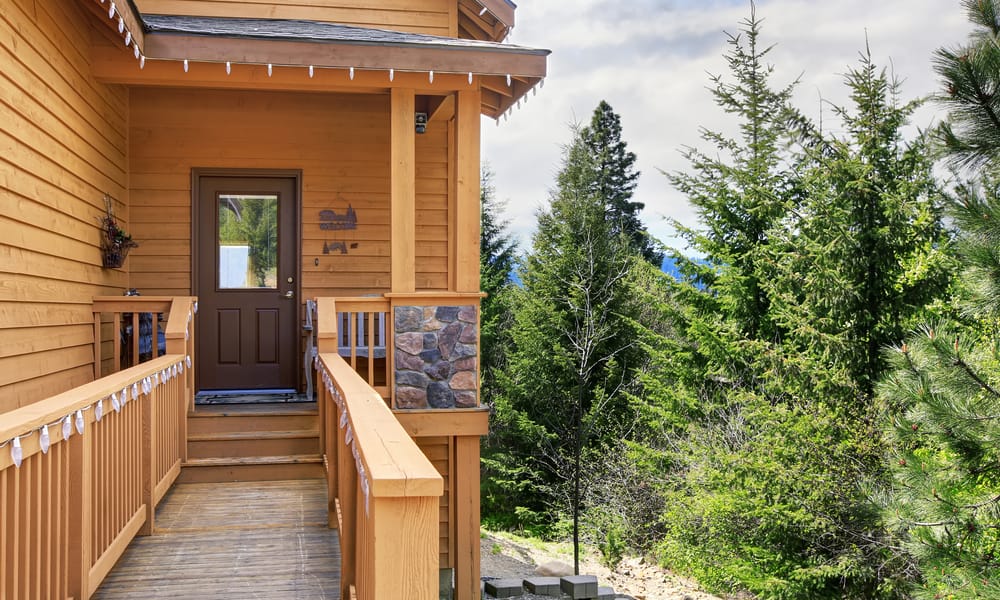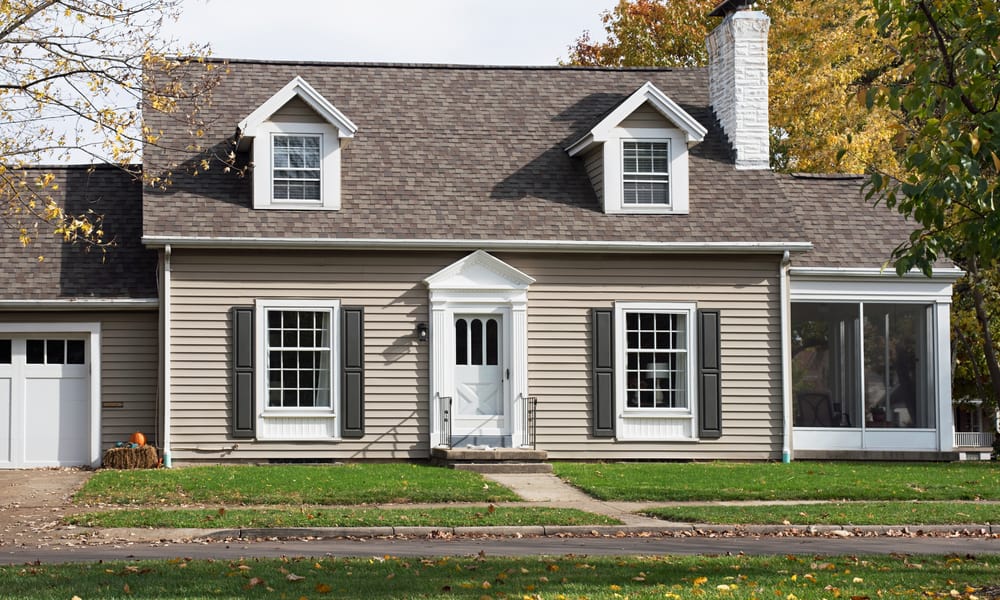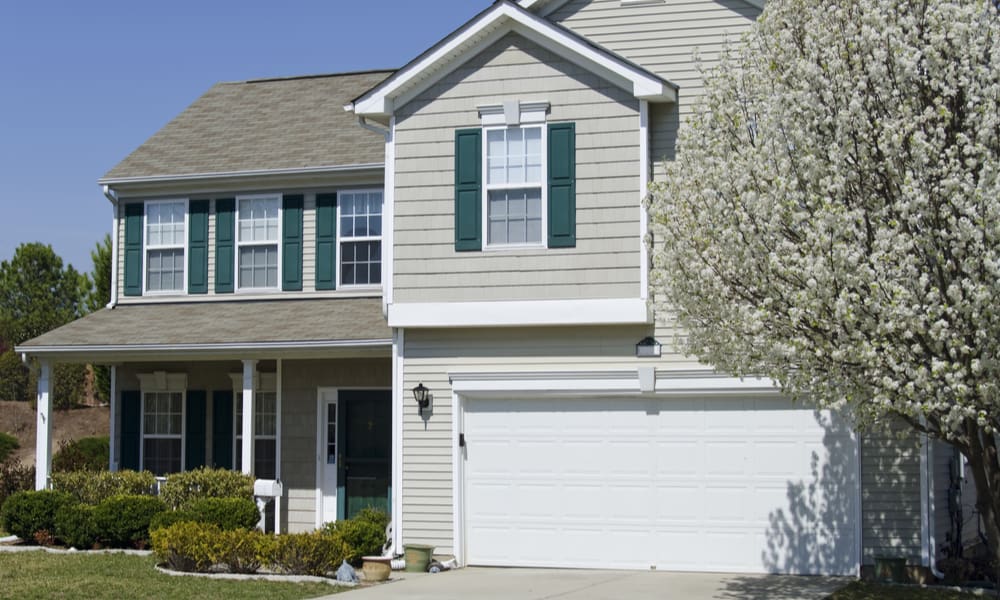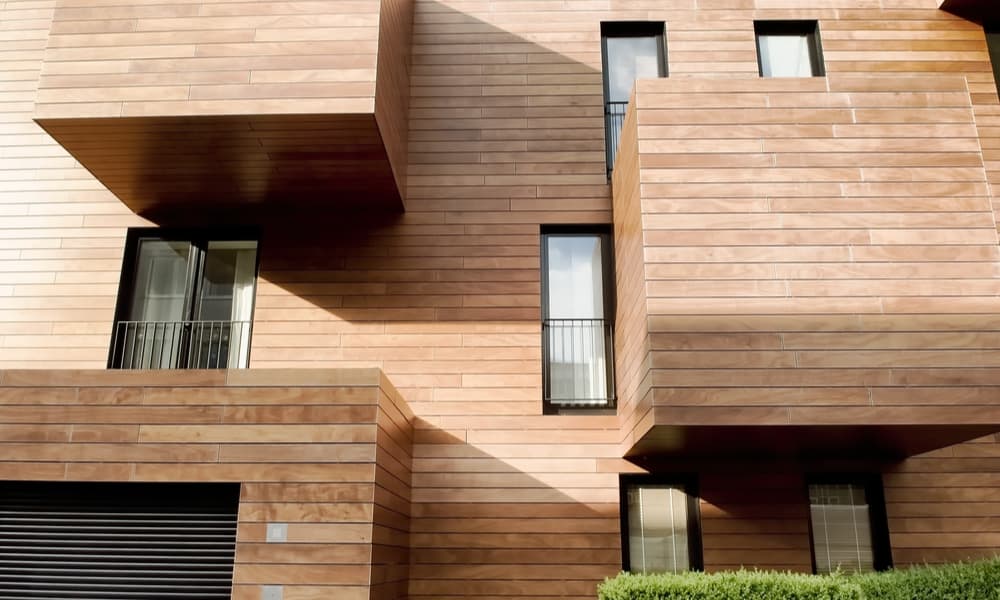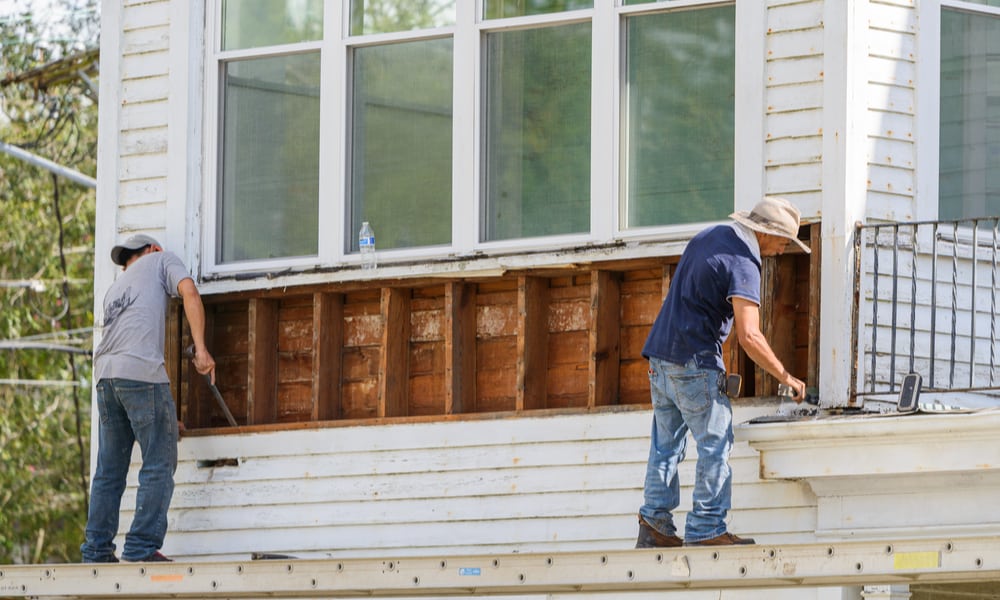Many homeowners who plan to install or replace existing siding often hesitate between vinyl vs. wood siding as the two best options available on the market. Wood has been the favorite material for siding up until vinyl siding appeared in the 1950s.
Even today, you shouldn’t make a quick decision before determining all advantages and downsides of both alternatives. Avoid a common mistake to decide only based on costs and appearance, but always check the material’s energy efficiency, durability, and maintenance options. Let’s take a closer look.
Table of Contents
Wood vs. Vinyl Siding
Wood siding
Rustic wood siding is a timeless and stylish option for every home exterior that looks great and increases the overall house value. Likely, this attractive, strong, and durable material will never go out of fashion.
The huge advantage is that you can find wood siding available in numerous designs and styles, like:
- Traditional clapboard
- Dutch lap
- Shakes
- Shingles
- Board-and-batten
Plus, you can pick out the wood type that fits your home decor the best, including:
Vinyl siding
Vinyl is a chemical polymer formed by melting powder vinyl resin and mixing it with additives. Commercial use started in the 1950s as a cheap and reliable aluminum siding replacement.
Nowadays, many American homeowners choose this material, primarily because of its durability and low price and maintenance. Be careful when considering this option since its quality can significantly vary. The excellent thing is that you can pick out among many designs, such as:
- Traditional clapboard-style
- Board-and-batten
- Shingles
- Shakes
- Vertical
Wood vs. Vinyl Siding Properties
1. Appearance
Wood Siding
Most people firstly consider siding appearance and style when deciding to buy it or replace the existing one. It is not negligible since siding covers most of the house’s exterior but shouldn’t be the only feature you have taken into consideration.
The wood siding looks spectacular, so most people still pick out this option. You can choose between various wood types, numerous styles, and plank sizes to match your home style. Once it fades, you can repaint your facade and change its color as desired.
Vinyl Siding
On the other hand, vinyl siding offers customization, including style, design, and colors. You can even pick out a wood-like vinyl siding! However, plank sizes, the way of installation, and style selection are a bit limited. Plus, there is no possibility to forecast fading level and have no options of repainting this material.
2. Durability
Wood Siding
Wood siding is durable but subject to weather conditions, forcing you to scrape, sand, and repaint it every few years. Another problem when choosing wood siding is possible insect infestations, including beetles, ants, and destructive termites.
Vinyl Siding
Tightly sealed vinyl siding won’t rot, warp, crack, expand and contract regardless of the weather, making this option highly durable in any region.
If you maintain wood siding once in five years, it will last for 20 to 40 years. Otherwise, wood can rot, decreasing its lifespan. Vinyl will last more than 40 years without much maintenance except for necessary washing.
3. Energy efficiency
Wood Siding
As you have probably known, wood siding is a good insulator, but it seems that vinyl siding is better. The thing is, you should expect wood, as a natural material, to change while temperature oscillates, so it is impossible having it entirely tight-sealed.
Wood vs. vinyl siding energy efficiency (R-value) |
||
| Wood | Vinyl | Vinyl with insulation |
| 0.81 to 0.87 | 0.67 | 3 to 4 |
Vinyl Siding
On the other hand, vinyl siding won’t warp while seasons pass, and moisture won’t jeopardize your house, particularly when adding a foam layer between the walls and siding. That foam increases the R-value, the material insulating ability.
This option will save energy and reduce your bills. Unfortunately, you can’t add insulation when using vinyl as a rainscreen.
4. Environmental impact
Wood Siding
Wood is an excellent eco-friendly material, including modified, non-toxic wood siding covered with a bio-based liquid that doesn’t contain VOCs.
Vinyl Siding
Vinyl siding is an artificial, plastic material you can’t recycle so that it will stay indecomposable in a landfill for decades. This material also contains various chemicals that release toxins into the air after burning, making it highly dangerous and detrimental to the environment.
5. Installation
Wood Siding
Since you need to nail wood siding over the house surface, it will take some time to install it properly. If you want to finish the job independently, you should be skillful since cutting boards with a saw and painting them before installation are necessary. Another option is to hire a professional, but it will increase total costs.
Vinyl Siding
Vinyl siding is uncomplicated to install since the planks and shingles design allow locking into one another without adding any fasteners. It is usually an easy DIY project that won’t take you too much time.
6. Maintenance
Wood Siding
The truth is that wood is susceptible to insects and mold and can peel, detach, and warp over time. You will also need to repaint or stain this material at least once in five years. However, you can prevent these problems by purchasing modified wood impregnated with a bio-based solution.
This material is more durable thanks to increased wood thickness by 50%. In such a case, wood siding will be resistant to rot, mold, and destructive insect activity. Plus, there is no need to maintain it except for occasional cleaning and repainting when desiring.
Vinyl Siding
Many homeowners misbelieve that there is no need to maintain vinyl siding. It is not entirely true. In fact, you need to wash your vinyl siding regularly. Both hand washing and pressure washing can be demanding processes.
While the hand washing option is cheap, it is hard work that requires a lot of time. On the other hand, pressure washing requires hiring a professional or buying a pressure washer, which will cost you money.
Vinyl can crack in regions with harsh weather conditions, so it is not a recommended material in the northern states. On the other hand, too hot weather may soften it, causing warping and even melting.
Once such changes occur, it is impossible to return the vinyl to the initial shape. Replacing siding is usually tricky and expensive, plus you will hardly match its color with existing. You also need to know that there are no options to repaint your facade once it fades.
7. Cost
Wood Siding
The amount of money you need to set aside for wood siding will vary depending on the wood type. As you can guess, the price will increase with material quality. Plus, you should count on future maintenance costs.
On average, wood will cost you at least $5 to $10 per 1 sq ft (0.09 m2). In other words, the initial wood siding price for a home of 1,500 sq ft (139 m2) is approximately $10,000 to $11,000, but you can pay more or less, depending on the chosen wood quality.
In some cases, high-grade wood siding may cost more than 250% than quality vinyl siding, including material and installation expenses.
Vinyl Siding
Vinyl is much cheaper than wood and costs approximately $1.6 to $7 per 1 sq ft (0.09 m2) installed, plus $1 per square foot for insulation. That means you need to spend $3,000 to $7,000 for a house of 1,500 sq ft (139 m2) on average.
Even the most expensive, high-quality vinyl siding that costs equally to wood is still a cheaper option since the installation process is faster and less complicated. Plus, this material doesn’t require additional expenses for maintenance except regular washing.
In both cases, you need to count on $1,000 to $2,000 for the old siding disposing of. The final price will depend on the material type and the region where you live.
8. Removal and replacement
If you think of switching your wood siding with vinyl, you should consider all the pros and cons of removal and replacement. Nowadays, it is not rare for homeowners to install vinyl siding over wood, but you take care of:
- Wood siding needs to be in good condition and free of rot and mold
- If the wood siding is beveled, you need to use foam board and furring strips to get a flat surface before adding vinyl
- Add a moisture barrier over the old wood siding before attaching the new vinyl siding
- Adjust window and door frames to match the new wall thickness
Advantages and Disadvantages
Wood Siding
Pros
- It is an elegant, stylish, and traditional material
- Attractive wood siding will increase the home resale value
- Wood siding may last for decades when properly maintained
Cons
- It requires a high initial investment and is difficult to insulate
- Maintenance can be demanding and expensive
- Wood is susceptible to pests and moisture
Vinyl Siding
Pros
- You can effortlessly install it on your own
- This material is easy to maintain
- It is resistant to pests and humidity
- It is cheap
Cons
- It is neither an elegant nor eco-friendly option
- It is prone to cracking or melting when exposed to extremely low or high temperatures
Summary
You can find many siding materials available on the market nowadays, but wood and vinyl siding are still the most desired options. Both have numerous advantages and downsides, and it is up to you which one to choose for your home.
